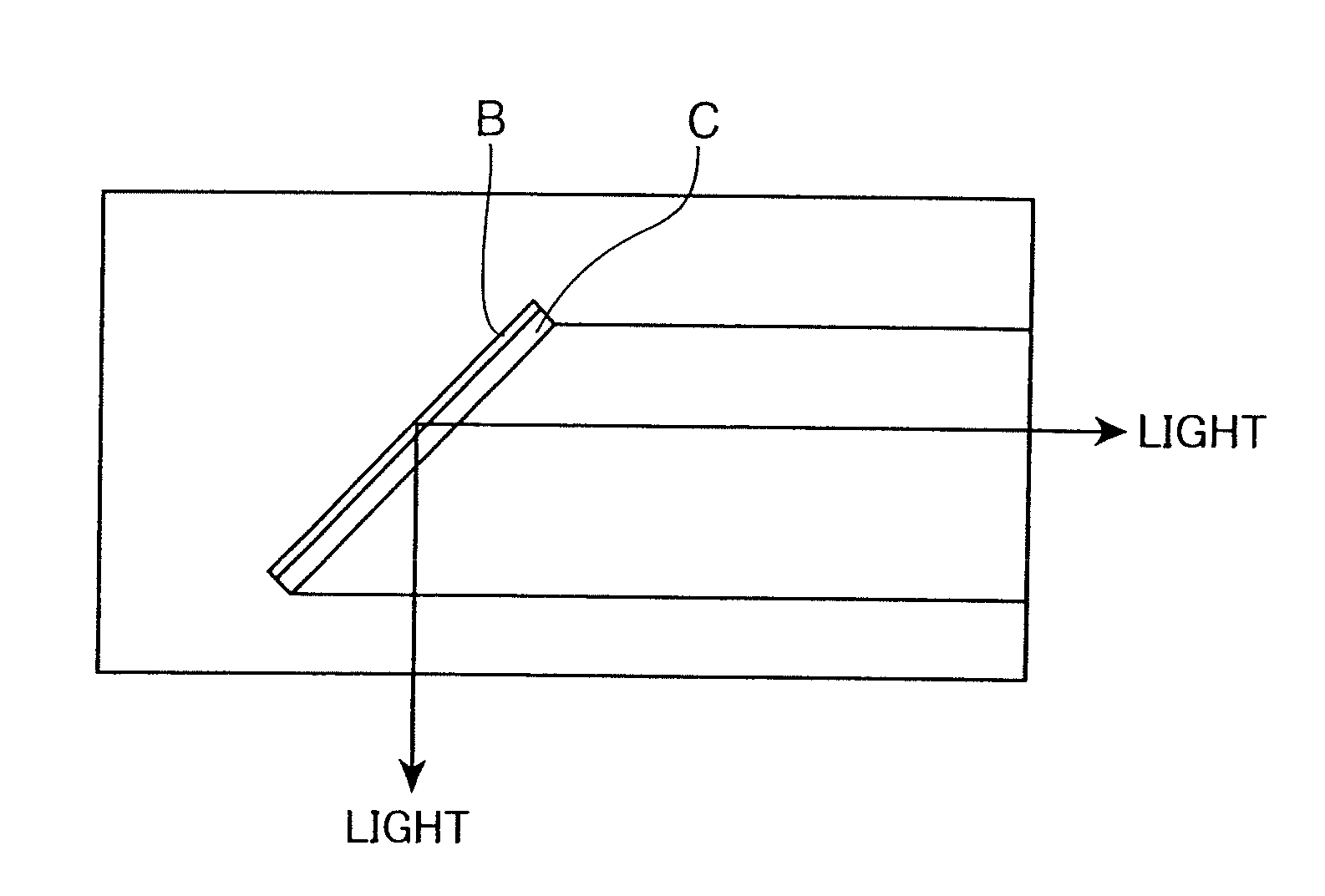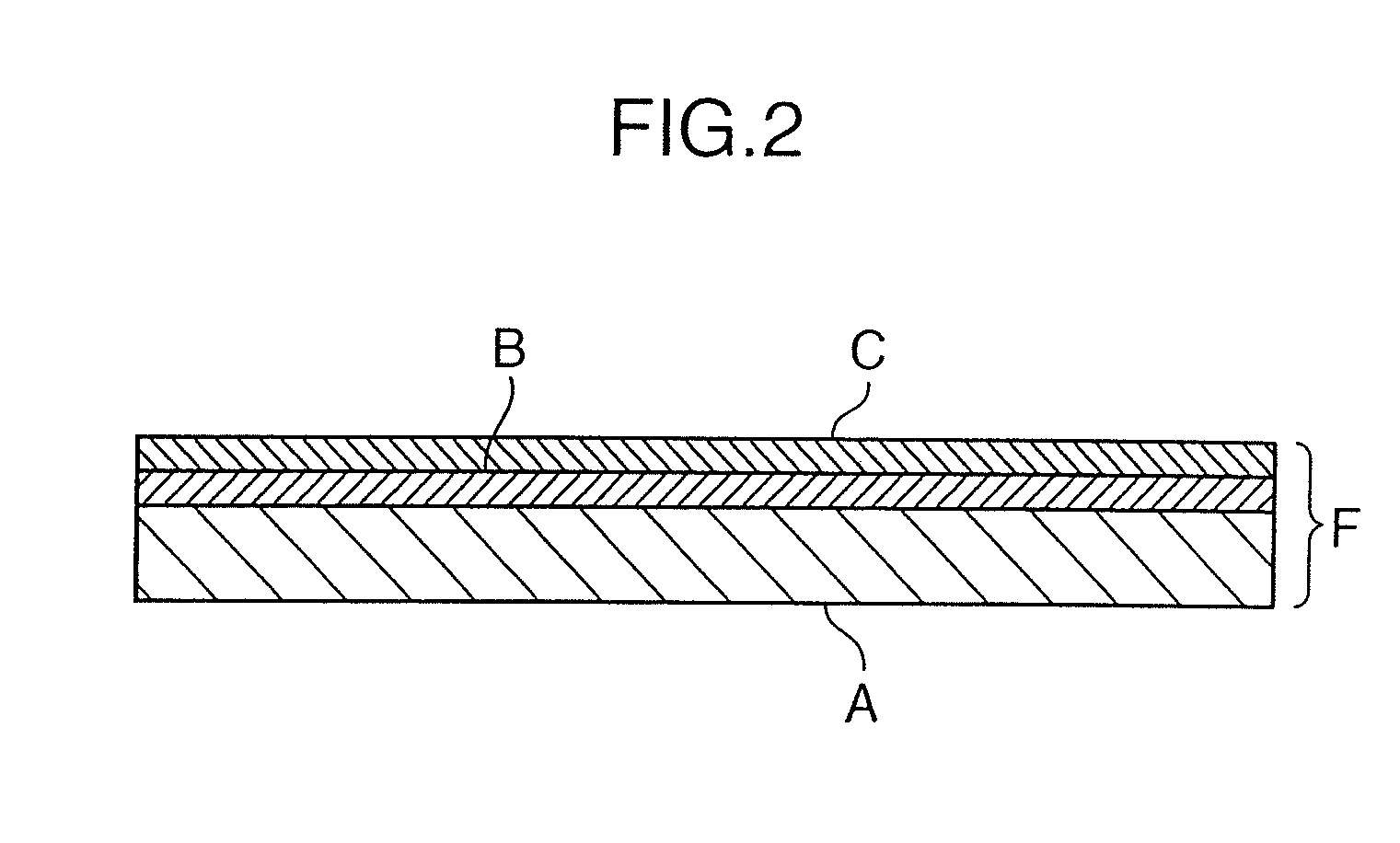Method for forming mirror-reflecting film in optical wiring board, and optical wiring board
a technology of optical wiring board and mirror-reflecting film, which is applied in the direction of optical elements, circuit optical details, instruments, etc., can solve the problems of increased material costs, difficult adhesion task, and excessive economic burden, and achieve the effect of easy peeling
- Summary
- Abstract
- Description
- Claims
- Application Information
AI Technical Summary
Benefits of technology
Problems solved by technology
Method used
Image
Examples
example 1
[0097]As a copper-plated flexible board, a FELIOS board, manufactured by Panasonic Electric Works Co., Ltd. (product name “R-F775”, polyimide thickness 25 μm, two-sided board) was made available, and all the Cu on one face was etched off.
[0098]As the material for cladding, the epoxy film A was used; the OPP film of the film A was peeled away, the film was placed such that the material was in contact with the etched-off face of the board, and pressure was applied at 60° C. and in 0.2 MPa for 120 seconds to perform lamination. Next, a super-high pressure mercury lamp was used for irradiation with 2000 mJ of light at 365 nm to cause hardening, and finally the PET film was peeled away to form the lower cladding on the board.
[0099]Next, the epoxy film B was used as the core material, and similarly to the above procedure, the epoxy film B was placed on the surface of the lower cladding, and lamination was performed by applying pressure at 60° C. and in 0.2 MPa for 120 seconds. Next, a pho...
example 2
[0107]Methods similar to those of Example 1 were used, up to formation of the 45° inclined faces.
[0108]Next, reflecting film formation by thermal transfer was performed. As the multilayer film for transfer, the multilayer film 3 was used, and as the head for thermal transfer, a temperature-controlled type soldering iron similar to that of Example 1 was used.
[0109]The multilayer film 3 was held with tweezers, and while using a microscope for observation, was positioned such that the side of the adhesive layer of the multilayer film 3 was in contact with the 45° inclined face obtained by dicing. The soldering iron with the tip temperature adjusted so as to be 170° C. was brought into contact for 5 seconds with the base face side of the multilayer film 3 to cause hardening of the adhesive layer. Then, upon peeling and removing the multilayer film 3, only the polyimide film was peeled from the 45° inclined face, and it was confirmed that Al was transferred and bonded to the inclined fac...
example 3
[0113]Similarly to Example 1, fabrication up to formation of the 45° inclined faces was performed.
[0114]Next, reflecting film formation by thermal transfer was performed. As the multilayer film for transfer, the multilayer film 1 was used. As the soldering iron for thermal transfer, the same temperature-controlled type soldering iron as in Example 1 was used; silicone rubber of thickness 15 μm was mounted so as to cover the tip of the iron, and a thermocouple was installed.
[0115]The multilayer film 1 was held with tweezers, and while using a microscope for observation, was positioned such that the side of the adhesive layer of the multilayer film 1 was in contact with the 45° inclined face obtained by dicing. The soldering iron, in which a tip temperature was adjusted such that the thermocouple readout was 170° C. (the silicone rubber surface was at 170° C.), was brought into contact for 5 seconds with the base face side to cause hardening of the adhesive layer. Then, upon peeling a...
PUM
 Login to View More
Login to View More Abstract
Description
Claims
Application Information
 Login to View More
Login to View More - R&D
- Intellectual Property
- Life Sciences
- Materials
- Tech Scout
- Unparalleled Data Quality
- Higher Quality Content
- 60% Fewer Hallucinations
Browse by: Latest US Patents, China's latest patents, Technical Efficacy Thesaurus, Application Domain, Technology Topic, Popular Technical Reports.
© 2025 PatSnap. All rights reserved.Legal|Privacy policy|Modern Slavery Act Transparency Statement|Sitemap|About US| Contact US: help@patsnap.com



